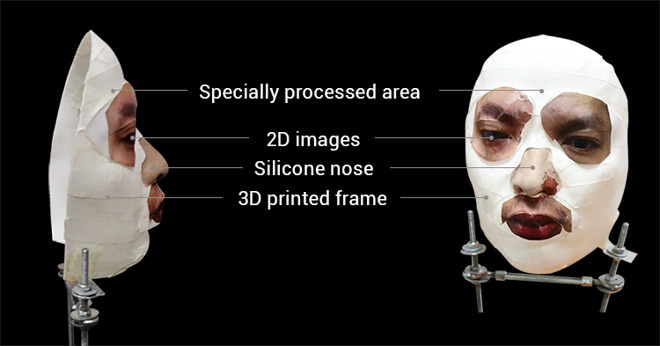
It’s a Slow News Friday™ but we still have news for you about several Apple store renovations that are complete, green lines on the edges of iPhone X displays, and spoofing Face ID
- Burlingame and Burlington — two cities on opposite sides of the US — will see newly renovated Apple retail stores next week
- A tiny fraction of iPhone X screens are displaying a thin green line on either side
- Vietnamese security firm Bkav says they can spoof Face ID with a sophisticated 3D mask
The text version of the podcast can be read below. To listen to the podcast here, click the play button on the player below. Apple News readers need to visit Apple World Today in order to listen to the podcast.

Text Version
This is Steve Sande for Apple World Today, and you’re listening to the AWT News Update podcast for Friday, November 10th, 2017.
Two Apple retail outlets on opposite sides of the country are going to reopen on November 18 at 10 AM local time after the completion of months of renovation work. The stores are both quite old, with the store in Burlingame, California debuting in July of 2003 and the Burlington, Massachusetts store opening in November 2005. The timing of the store reopenings was likely planned to insure that both outlets were open on Black Friday, which happens on November 24. These are smaller stores, but will most likely receive the same treatment other renovated stores have seen, which includes wooden shelving, large video displays, and large glass doors.
New iPhones are often subject to odd little glitches when they’re first released, and the new iPhone X is no exception. Several reports on social media are pointing to a display problem that occurs with a thin green line showing up on either the left or right side of the phone’s OLED display. The affected iPhones are being replaced for free, and it’s just a tiny number of devices that have been diagnosed with the issue so far. A very similar problem occurred with the Samsung Galaxy S7 screen last year; Samsung is likely the manufacturer of Apple’s screens for the iPhone X as it’s the only company that can produce a large enough quantity of the OLED displays to meet demand.
And of course, whenever someone comes out with a new way of doing biometric authentication like Apple’s Face ID, someone is going to try to see if they can bypass that authentication. A Vietnamese security firm called Bkav says they were able to spoof Face ID by making a special mask that included a 3D-printed frame with makeup, a silicone nose and 2D images pasted to the frame, and doing special processing — whatever that is — on certain areas in the forehead area of the mask. What’s interesting is that Apple used much more sophisticated masks to train the neural network on the iPhone X, so it’s odd that Bkav was able to do a spoof with a relatively crude-looking mask. It’s still rather unlikely that anyone would want to use this method to bypass Face ID, as it would require a detailed 3D model of a person’s face and highly accurate photos — both of which would take time and money to produce. Still, this is something that the FBI would probably like to figure out for future attempts at retrieving data from the phones of criminals.
That’s all for today; I’ll be back Monday afternoon with another edition of the AWT News Update.
